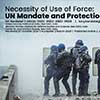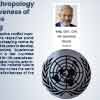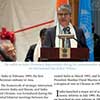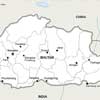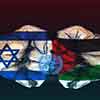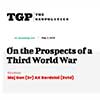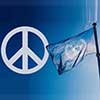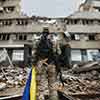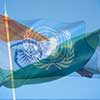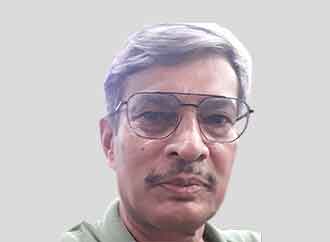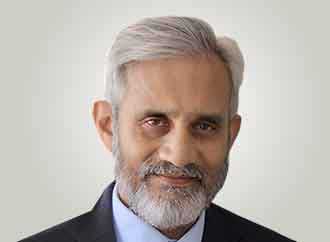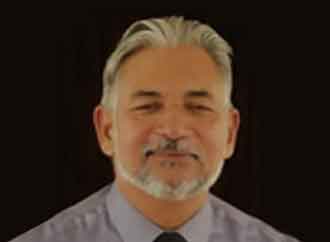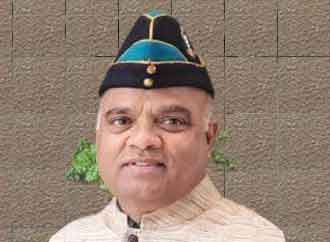United Nations (UN) peacekeeping is an effective conflict management tool conceived during the early part of the Cold War. In the multinational structure of peacekeeping missions, the peacekeepers bring varying training standards, operational ethos, cultures, and traditions that are practised in their countries. These elements form the core of the member states’ approach to peacekeeping which, in turn, impacts the performance of the peace operations. Adapting the respective social and military norms, which take years to develop, to the norms of peacekeeping helps implement the mandate. This is reflected in the behaviour of the peacekeepers while executing the mandated tasks. Studies and experience from the ground have revealed that soldiers from the Global South, especially from India, are better suited for UN peacekeeping. The anthropological perspective of the national culture that peacekeepers bring from across the world can help to enhance the effectiveness of the peacekeeping mission.
Introduction
United Nations (UN) peacekeeping can be as effective as the UN Security Council and the Troop Contributing Countries (TCCs) want it to be. Once deployed, operationalising peace operations face several challenges. At the operational and tactical level, interoperability between different contingents of the TCCs is one of the main hindrances. With the varying training standards, operational ethos, cultures, and traditions that the peacekeepers bring with them after years of practice in their countries, coordination of operational activities becomes a challenge. The study of anthropology helps to recognise different cultures of the TCCs with their unique beliefs, values, and norms, followed by various actors in the conflict zone. This includes the peacekeepers, the state and non-state actors, as well as the civilian population of the country amid conflict. Culture, which is the core concept of anthropology, is intertwined with history. Cultural anthropology, hence, helps to better understand why individuals of different groups can behave differently in response to the same situation.
Soldiers can perform well, particularly in counterinsurgency/ terrorist operations, when they have a better understanding of the non-state actors and their psyche, and the support base of the local population. It also helps to plan and execute operations against military adversaries in a conventional war. Military anthropology remains valid even when the armed forces take part in operations as part of an international force. Therefore, a perspective of the different traits of national and military cultures that peacekeepers bring from across the world can act as an enabler for the leaders to enhance the performance of the peacekeeping mission. This article will explore the impact of military anthropology on the effectiveness of uniformed peacekeepers.
The Mission and the Cultural Challenges
There is no yardstick on the number of TCCs that can participate in a peacekeeping mission. As an example, the total number of TCCs in three missions in South Sudan, the Democratic Republic of Congo, and Lebanon varies between 40 and 60. Similarly, the number of top TCCs with contributions of more than 200 soldiers also varies. The multicultural and multilinguistic composition of any international force creates tension not only among the peacekeepers from different member states but also between peacekeepers and civilian staff.1 It results in interoperability challenges in a peacekeeping mission’s heterogeneous structure.
Peacekeepers, once deployed, are expected to adhere to the basic UN peacekeeping norms such as adherence to the principles of peacekeeping, respect for gender diversity, sensitivity to local culture and discipline, refrain from abuse of authority and exploitation of sex, and climate change, etc. There can, however, be differences in the interpretations of the UN norms.2 Varying interpretations of the three principles of peacekeeping are one such example.3 As peacekeeping has evolved, understanding and interpretation of these principles have also changed. For example, there is confusion over the interpretation of the use of minimum force.4 Over time, more clarifications came opening new windows for their interpretation. Such mismatch influences even the member states’ positions on the doctrinal aspects of peacekeeping and their approach to operationalising the mandated tasks. In this regard, Soeters and Meulen, in their publication Cultural Diversity in Armed Forces: An International Comparison, cited how the cultural sensitivity of Turkish soldiers makes it easier for them to interact with the local population.5 Accordingly, Soeters and Manigart, editors of Military Cooperation in Multinational Peace Operations, noted that military personnel should be trained in cultural awareness and develop cultural intelligence.6
In the UN, the developed nations have the self-acquired rights to make all important policy decisions. On the other hand, the dirty and dangerous work is left to the bulk of the peacekeepers who come from the Global South. It has resulted in a clear divide in the approach to peacekeeping among the peacekeepers from the West and Global South. The distinct difference between the military culture of the western and non-western militaries will be described in the following section.
Military Culture of the Western Peacekeepers
What Chiara Ruffa, Professor of Political Science at the Centre for International Studies, had to say about differences in cultures and traditions was best understood after she studied the military culture of Italian and French peacekeepers, who are the major contributors to the UN Interim Force in Lebanon (UNIFIL). The current military culture of the Italian military is historical and its legacy during World War I (WWI) and World War II (WWII), where they changed sides, supported Mussolini’s coup and helped marginalise the monarchy in 1924. Later, the Italian military was sidelined by the government, limiting its role completely. There was a dent in the military’s image, and it needed revival. There was also a notion that Italian soldiers were good people during WWI and the colonial era, even though it was a myth. It was important for the Italian military to maintain that image of ‘Less Aggressive’. Italian military’s involvement in multinational operations post-Cold War was an opportunity to revive its image. Participating in softer peacekeeping missions with a human face helped to maintain their image, find better acceptability, as well as reduce the chances of fatality for peacekeepers when the armed groups retaliate.7
The French military had a higher status before WWII. However, certain events that followed, thereafter, impacted its status. Nevertheless, it is seen and accepted as an important institution, always ready to intervene unilaterally and sacrifice itself for the nation. Besides, the historical myth of ‘French Fury’ is a driving spirit that is displayed even in peacekeeping missions. For the French, force protection is a higher priority and, hence, has deployed even Leclerc tanks for routine operational patrolling. As a result, the French peacekeepers are generally seen as more arrogant by the local population of South Lebanon.
The influence of the cultural beliefs of the western nations is noticeable in the operational activities of their peacekeepers. The Italian peacekeepers maintain a slightly softer approach. The French military is ever ready to use force when provoked. French peacekeepers feel that anyone who is not allowing the peacekeepers to move in a particular area is a hindrance. Hence, it is justified to use force against them to ensure their freedom of movement.8
Spanish Legion peacekeepers are also very disciplined and proud of their soldierly appearance. To them, there is no grey between white and black, and interpret the mandate that way, which unfortunately is a political product. On 24 Jun 2007, a roadside improvised explosive device exploded in southern Lebanon, killing six Spanish peacekeepers serving with the UNIFIL.9
One of the common behavioural traits of peacekeepers from developed nations is that they are fond of attiring in full battle gear wearing dark glasses, holding guns ready to fire, and driving at high speed. This, however, is considered a sign of arrogance by the host state. Apart from this, photography of the area of the operation, even if it is for updating terrain information, is taken as an intrusion into their privacy by the host nation. This results in the local population disliking the peacekeepers from the West, limiting their freedom of movement, and at times influencing violence by the non-state actors against the peacekeepers.
The nations that participate in an international force but lack an understanding of military anthropology might pay huge political costs. In Mali, the separatist movement by the Tuaregs, who are from north of Mali, began sometime in early 2012. Over the years, the movement was hijacked by the Islamist jihadis who migrated from the northern part of Africa. The approach of the French military, which was supporting the Malian army to fight the rebels, was different. French did not want the Malian army to attack the separatist groups. Their strategy was to force the separatists to break away from the jihadis. Since this strategy was not in line with the Malian junta, France was asked to end their operations in Mali.10 The French did not understand the military anthropology of the Malian army, who considered the separatist movement to be a lesser threat than the jihadis.
Joseph Soeters, Professor of Management and Organisation Studies at the Netherlands Defence Academy, in his study of military sociology, later commented that western soldiers’ nationalistic bent hinders their adaptation to the needs of local society.11 That the member states participate in peacekeeping only because of their strategic interest explains this. When the genocide in Rwanda began on 06 Apr 1994, Belgium, France and the United States were the first to vacate the country.12 Even otherwise, it is not surprising to find well-trained and well-equipped peacekeepers shying away from using force even when it is legitimate to do so. One reason is that no member state would prefer to carry the body bags of their peacekeepers home because it becomes difficult to justify politically.
The action of the Swedish peacekeeping force in Srebrenica, in Dec 1993, is an example of the contrary. Despite being heavily outnumbered by a Croatian battalion-size force, one platoon of this force refused to hand over two Muslim nurses to the Croats for more than 12 hours. In another incident, when a tank detachment of the same battalion was lured into an ambush by the Bosnian Serbs, the crew opened the main guns of tanks until the Bosnian Serb ambush team were silenced. Colonel Henricsson, the commanding officer, instead of taking clues from his political superiors, formulated his mission objective, even if it became necessary to use force and ignore rules and regulations when the civilians were threatened. The resolve to achieve the mission objective disregarding the highest political authority and without worrying about one’s future career is the culture of mission command which takes decades to grow and develop.13
The developed nations from the West are blessed with relative internal peace. They don’t have to use their armed forces to defend their nation’s border and, hence, can carry the battle far away from their homelands in pursuit of their countries’ strategic interests. But these nations miss out on the challenges of the criticality of fighting internal conflicts where the line dividing the armed man and an innocent civilian gets blurred.
The western member states rarely participate in difficult and complex peacekeeping missions. When they do, they generally lack popular support from the host government. The support, if available, is purely transactional in return for the investment the governments of these militaries make in the local societies to win the hearts and minds of the people, and probably to buy peace. Funding special developmental projects in the countries that are in the middle of the conflict is such an example. This is one of the elements of the Civil-Military Cooperation (CIMIC) concept of the UN peace operations. Continuation of such programs, however, is contingent upon the member states’ participation in the peacekeeping mission. No matter how much money is spent, it does not help to implement the mandate.
Military Culture of the Global South
The Global South peacekeepers’ idea of peacekeeping, which comprises countries like India and from Asian and African regions, is different. They have fewer doubts about the ambiguous terminologies, are more accessible, and maintain a human face, yet are ready to use force to either protect themselves or the civilians in danger. For example, if pelted stones, Indian peacekeepers would get out of their armoured cars unarmed and approach the civilian population with a smile. The human face of the peacekeepers helps disarm the civilians of their aggressiveness. Besides, the effect of common Asian cultures like family orientation, respect, kindness, finding joy in giving, etc., is reflected in the peacekeepers’ operational activities on the field.
However, when it comes to confronting the non-state actors and armed groups in intra-state conflicts, the soldierly characteristics take control of their actions. The African region is the place for most violent intra-state conflicts. The civilian population suffer the most from the armed rebel groups. Hence, protecting civilians from the violence of conflict is a common and priority task of all peacekeeping missions. There are ample instances of peacekeepers from the Global South, especially the Indians, not hesitating to use force even at the cost of fatal casualties to the peacekeepers, when it came to protecting civilians. Similarly, Mongolian peacekeepers, amongst several other TCCs from the developing nations, always displayed courage and fearlessness when threatened by armed rebel groups.14 Their valour and warrior skills go back to Genghis Khan’s time. How can such a phenomenon be explained? The answer lies in the legacy of the military culture of the TCCs
Legacy of Military Culture
The national culture and traditions influence the military culture and tradition. The general composition of the Indian Army is based on regional martial races, which is rooted in their tradition to fight for their cause. The soldiers come from across the country. Two examples, one from northern India and the other from northeast India (which comprises hilly tribes), will help to get a glimpse of the two different military cultures of the Indian soldiers. This remains unchanged even while they are part of an international force. The work of Rahul Sagar, Professor of Political Science at New York University, Abu Dhabi, delved into one of the warrior classes from North India. They are known as Rajputs, who believe more in the power of the swords than anything else.15
The next example is from northeastern India. The Mughal Empire ruled India for more than 300 years, until the British came. When the Mughals began their rule in northern India, the Rajputs fought but finally succumbed because of their greed. The Mughals, however, despite 18 attempts could not rule northeastern India. A detailed account can be found in the seminal work on the history of Assam by Edward Albert Gait.16 Besides Ahoms, several other tribes in the far northeast are also fierce fighters. The regiments they join carry the culture of these warriors.
Springing back from setbacks to fight another day is in the true spirit of the warrior class of India. Marston, in his work The Culture of Military Organizations, observed that the Indian Army, despite earlier challenges and setbacks, reformed and performed at the highest levels of professionalism, especially towards the end of WWII. In his opinion, “Its performance in that conflict was the high-water mark of the largest all-volunteer army in history”.17
The regional martial composition, however, is limited to only Junior Commissioned Officers (equivalent to warrant officers) and soldiers. The officers come from all over India. After joining their respective regiments, they pick up the cultures, traditions and religions of the troops they command. So much so that the officers who serve with the troops from northern India find it extremely difficult to adapt to the cultures of those from northeast India. On the flip side, the officers, regardless of their background, grow up like the soldiers they serve with, and the acquired traits are reflected in their style of command. When allowed to lead multinational forces, Indian generals have made the country proud. India has the distinction of contributing several senior mission leaders at the operational level as well as at the UN headquarters.18
Most nations from the Global South are besieged with internal strife. As a result, the militaries from this block, mostly the armies, are involved in counterinsurgency/terrorist operations on daily basis. Aside from its primary role to defend its geographic borders against its enemies, close to 50 per cent of the Indian Army is deployed to fight insurgency and terrorist movements. For any insurgency movement to survive, the insurgents need among others, support from the local population. Fighting insurgency, therefore, is a special skill with hands tied behind their back. When practised for years, it becomes a habit. One benefit of the Indian Army’s prolonged deployment in the counterinsurgency/terrorist operation is its ability to deliver the most with the least of the resources. For instance, while reaching out to the local population in the conflict zone, the peacekeeping contingents contribute to the infrastructure development in their area of operations. India’s budget for the maintenance of its contingents does not cater for CIMIC activities. Hence, Indian contingents resort to saving and using the available resources to extend similar CIMIC-related benefits to the local populations. India’s innovative ideas seem to have produced better results in building trust amongst the local populace.
The peacekeepers from the Global South find it easy to adapt to the peacekeeping environment far away from their homes. Coming from the developing world, their needs are few and can easily operate in an alien environment with ease even making supreme sacrifices. Out of a total of 4,409 fatal casualties as of 30 Nov 2024, India lost 180 peacekeepers.19 Likewise, when Israel invaded Lebanon in Jul 2024, the war continued for 34 days.20 According to the locals, Indian and Ghanaian soldiers were the only ones who used to come out of their bases and pick up the injured and dead civilians during the lull of the battle.21
India also does not want to carry the body bags of their soldiers home while serving as part of a peacekeeping force. Unlike most member states, India, however, rarely issues caveats to Indian peacekeepers on their operational activities of the mission. India holds a clear line on the consequences of fatalities which are a result of firefights with non-state armed groups while saving innocent human lives. Instead of issuing caveats, India relies more on extensive pre-deployment mission-oriented training to better prepare its contingents for mandate implementation.
The centre of gravity of peacekeeping lies with the local population. Besides, professional skills, getting local legitimacy— acceptance in the societies of the host nation is crucial. Local legitimacy, however, is not available upfront. It must be earned with evidence and consistency. It, in turn, helps to get cooperation from the population. For instance, respect for local sensitivity is a crucial factor in winning the hearts and minds of the local population. The author recalls his conversation with Timur Goksel, the then-political advisor to the Head of the Mission and Force Commander of UNIFIL, during the author’s official visit to the mission headquarter in Oct 2001. With deference to Indian military culture, Goksel stated that when Indian peacekeepers lower their gaze while interacting with the local Lebanese women, it helps build trust and get cooperation.
Conclusion
Culture and traditions are different. However, over the years, the culture and traditions get mixed and reflected in a distinct military attitude, while combating internal disturbances, defending the border, and as part of an international intervention force. The study of military anthropology is not new. The colonial masters used this as the bridge between the rulers and the ruled. They ruled their colonies far away from their countries for hundreds of years. It is through a different matter that the colonial masters perhaps did not factor in the probability of the resurgence of the warrior spirit of those who were conquered. At the individual level, the slave masters, with a good grasp of slave anthropology, fully exploited the weaknesses of their slaves to the hilt.
As for the military, the tradition of the necessity to know your men and enemy is grounded in the military anthropology of the enemy and the diverse composition of their soldiers. The peacekeepers bring with them varying standards of training, operational ethos, and cultures and traditions that are progressed and practised in their countries. This is reflected in the peacekeepers strategising the mandated tasks. Studies and experience from the ground have shown that the soldiers from the Global South, especially from India, find global acceptability as good peacekeepers to help the return of peace and stability. The study of military anthropology of the national and military culture of peacekeepers can be a crucial factor in exploring why peacekeeping either succeeds or fails. Besides, it can act as an enabler for the leaders to take the best out of the Blue Helmets.
End Notes:
1Joseph Soeters, Sociology and Military Studies: Classical and Current
Foundations, Routledge, 2018, pp 69-70, accessed 20 Jan 2025
2A K Bardalai, ‘UN Peacekeeping and Ambiguity in Normative UN Norms’,
Manohar Parrikar Institute for Defence Studies and Analyses Journal of
Defence Studies, 16, no. 3, July–Sep 2022, pp 3–31, accessed 22 Jan
2025
3United Nations Peacekeeping Operations: Principles and Guidelines
UN Department of Peacekeeping Operations, 2008, p 31, accessed 23
Jan 2025
4Bardalai, ‘UN Peacekeeping and Ambiguity in Normative UN Norms’
5Jan van der Meulen and Joseph Soeters, ‘Introduction’, in Cultural
Diversity in Armed Forces: An international comparison, ed. Jan van der
Meulen and Joseph Soeters, Routledge, 2007, p 6, accessed 25 Jan
2025
66Joseph Soeters and Phillip Manigart, ‘Epilogue’, in Military Cooperation
in Multinational Peace Operations: Managing Cultural Diversity and Crisis
Response, ed. Joseph Soeters and Phillippe Manigart, New York:
Routledge, 2008, 226; David C. Thomas, Efrat Elron, Gunter Stahl, Bjorn
Z. Ekelund, Elizabeth C. Ravlin, Jean-Luc Cerdin, Steven Poelmans,
Richard Brislin, Andre Pekerti, Zeynep Aycan, Martha Maznevski, Kevin
Au and Mila B. Lazarova, ‘Cultural Intelligence: Domain and Assessment’,
International Journal of Cross-Cultural Management, 8, no. 123, August
2008, accessed 21 Jan 2025 https://doi.org/10.1177/1470595808091787
77Chiara Ruffa, ‘French and Italian Units in Lebanon’, Military Cultures in
Peace and Stability Operations: Afghanistan and Lebanon, University of
Pennsylvania Press, 2019, 100-130; Chiara Ruffa, ‘Force Employment,
Unit Peace Operation Effectiveness, and Military Cultures’, Military
Cultures in Peace and Stability Operations: Afghanistan and Lebanon
(University of Pennsylvania Press, 2019), pp 88-89, accessed 22 Jan
2025
8Ruffa, ‘Force Employment, Unit Peace Operation Effectiveness, and
Military Cultures’
9UN, Security Council Press Release SC/9059 25 Jun 2007, accessed
12 Jan 2025
10‘Mali and the UN: Why peacekeepers are being told to leave’, BBC,
30 Jun 2023 : Isabelle King, ‘How France Failed Mali: the End of Operation Barkhane’, Harvard International
Review, 30 Jan 2023, . Also see, Nathaniel Powell, ‘Why France
Failed in Mali’, War on the Rocks, 21 Feb 2022, accessed 22 Jan 2025
/
11Joseph Soeters, Sociology and Military Studies: Classical and Current
Foundations, Routledge, 2018, p 69
12‘Ignoring Genocide’, HRW Report – Leave None to Tell the Story:
Genocide in Rwanda, Mar 1999, accessed 26 Jan 2025 Ignoring Genocide
(HRW Report - Leave None to Tell the Story: Genocide in Rwanda,
March 1999)
13 Tony Ingression, ‘In the name of Peace’, The Politics of Combat: The
Political and Strategic Impact of Tactical-Level Subcultures, Lund
University, 2016, pp 231-55, accessed 16 Jan 2025
14Edward Carpenter, interview by the author, July 2, 2024. Also, see,
Antonio Graceffo, ‘How the Mongolians punch above their weight in military
diplomacy’, Intellinews, 8 Feb 2024, accessed 18 Jan 2025
15Rahul Sagar, ‘Rajputana was shaped by warrior ethic. It was a barrier
to becoming great statesmen’, The Print, 26 Sep 2024, accessed 20 Jan 2025
16Edward Albert Gait, A History of Assam, Office of The Superintendent,
Government Printing India, 1906, accessed 28 Jan 2025
17Daniel Marston, The Culture of Military Organizations, Cambridge
University Press: 2019, 121-154, accessed 19 Jan 2025
18Col (Dr) Kulwant K Sharma, India and UN Peace Operations, USI and
Knowledge World, 2024, accessed 22 Jan 2025
19UN, ‘Fatalities’, UN Peacekeeping, accessed 23 Jan 2025
20UNSCR S/RES/1701 (2006), 11 Aug 2006, accessed 25 Jan 2025
21As told to the author by the civilian population in Lebanon in 2009
Major General (Dr) A. K. Bardalai, is an Indian Army Veteran and former Deputy Head of the Mission and Deputy Force Commander of UNIFIL.




